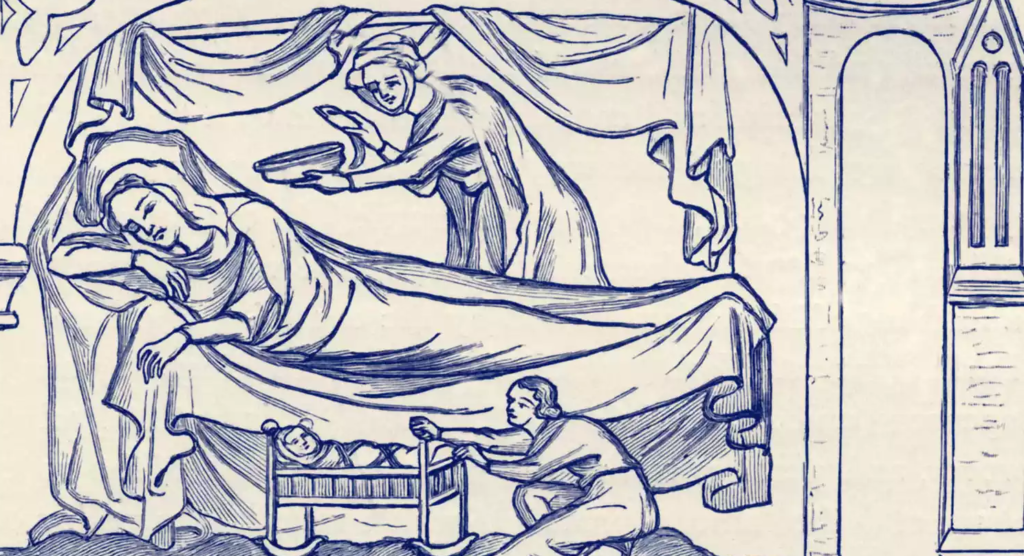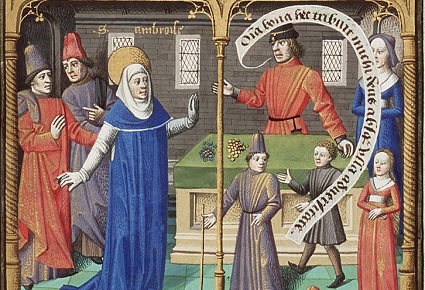Of the many inaccurate pieces of information that we often hear about the Middle Ages, one of the most often repeated is that the average medieval person only lived to be about 35 years old. The myth of the short medieval life expectancy is not inaccurate so much because it is false, but because it conveys a false impression of medieval life to people who do not know what life expectancy is. Clearly, most medieval adults lived well past their 30s. If they didn’t, it would be difficult to see how there would have been much time to accomplish anything. A civilization whose adults could not expect to live past their 30s would scarcely be able to produce the marvels that came out of the medieval epoch.
Let’s look at medieval life expectancy to see why this idea that most medieval people died in their 30s is a myth.
First, what is life expectancy? Life expectancy is the average span of years a person born in a particular time and place could expect to live. Like any other average, the average life expectancy is calculated by adding up the lifespans of particular individuals and then dividing by the number of persons in the sample group. For example, if we have a group of five men who live to the ages of 68, 72, 71, 80, and 76, then the average life expectancy for this group is (68 + 72 + 71 + 80 + 76)/5, which gives us a life expectancy of 73.4 years for this sample group.
Now, medieval life expectancy certainly did hover between 30 and 40 years, but this does not mean that most medieval people died in their 30s. The real problem with medieval life expectancy was actually infant mortality, which is the rate at which children die during infancy. Because of the dangers inherent in pre-modern childbirth, lack of knowledge about bacteria, etc., medieval infant mortality was exceptionally high, somewhere around 30-40%. This means 3 to 4 out of every ten children born would not live past infancy.

Once we understand this, we begin to see how infant mortality drives down the average life expectancy overall. For example, say we have another sample group with an infant mortality rate of 40%. Let’s say our ages are 1, 2, 2, 3, 40, 51, 63, 68, 70, 75. If we calculate the average life expectancy of this group, we see it is 37.5 years. The cluster of high infant mortality rates has driven down the average. But we see it is not the case that most of the sample group will die in their 30’s. In fact, if a person in this group survives into adulthood, their life expectancy is actually closer to 61 years. The medieval life expectancy must be adjusted to account for the high infant mortality rate.
A medieval person who survived into adulthood had a very good chance of living into his sixties or even seventies. Thus, while it is true that medieval life expectancy, understood as an average, was in the 30-40 year range, this does not mean to imply that the average medieval person did not survive their 30s.
Phillip Campbell, “Understanding Medieval Life Expectancy,” Unam Sanctam Catholicam, May 25, 2023. Available online at https://www.unamsanctamcatholicam.com/2023/05/understanding-medieval-life-expectancy

